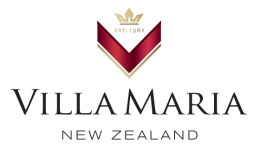8 May 2019
It is indeed my privilege to present to club members the Cellar Club’s annual report for the year 2018 – 2019.
I want to stress that the club is first and foremost about you. It is you as active members who make the club as vibrant as it is. Maintaining membership at a sound level is the key. Thank you for your support for events and meetings during the year and attending tonight’s AGM. Our monthly meetings continue to be well attended, in fact the average number of members attending monthly meetings relative to the club’s subscription membership has perhaps never been better. Total numbers attending tastings again exceeded 300 during this last year (at 9 meetings) but we have noted that guest numbers were a little down and this may need to be addressed if we are looking to build on our membership.
In particular the numbers attending the two club dinners in July and December 2018 were also at a high (the 2 dinners were collectively over 90) and as these dinners are highlight events for members we will continue to prioritise efforts to choose the right venue, creating a chance for you to share good wines with your table and to enjoy some of the first class cuisine that Wellington restaurants do provide.
May I add that this report, rather than being printed, is posted for your interest on the club’s website.
Keeping the membership levels up and ensuring meetings are well attended is a prime objective to ensure the club remains viable and we can sustain the costs that running the club incurs. You will see from the financial report prepared for the AGM that the club’s finances are in very good shape thanks particularly to the diligence and astute budget management of our long serving treasurer.
These club’s finances and fixed costs are manageable but do require active attention. Venue hire, licenses for the club website and the council’s liquor requirements, presenter gifts and the costs of the wines are the key points of focus. With healthy finances we are able to subsidise the annual BBQ and dinners, sustain a club cellar and provide those cellared wines at dinners and the AGM tonight. We are fortunate that occasionally the wine presenters either heavily discount the wine or are prepared to donate their wines. This can be unpredictable but where it eventuates we are grateful and it allows the benefits to flow back to members.
This is often a function of the size scale of the wineries or their subsequent response to your level of orders. It is worth noting that the presenters cover their own travel, visiting and accommodation costs and for some this is substantial. In those terms I want to thank members most sincerely for their preparedness to order on the night and many of the presenters particularly comment on both their orders and naturally express a willingness to return to the club. I know that is not always true of some other wine clubs where they have different arrangements and expectations. Our club’s operating model is not unique, but where other styles of club operations put some pressure on presenters and wineries, our model ensures good relations are maintained with wineries, our financial viability is ensured and door charges and subscriptions remain affordable.
Therefore, the level of support from members suggests the formula may be right but I want to stress that meeting your interests is paramount. We would want to hear both suggestions for meetings and ideas and options for events that are planned. Each member of the committee is only too willing to talk with you to seek and explore ideas to ensure the club remains in good heart and is delivering what members want in terms of wine education, quality wine experiences and a good social atmosphere at meetings and amongst members.
As members you have excelled with the help you provide with meeting logistics. Looking after the glassware, setting the venue hall up and helping stack tables and chairs away, assisting with pouring when requested, being inclusive at tables and helping with distribution of wine orders does ease the pressures involved in meetings and covering the necessary tasks and it is appreciated.
It is pleasing to reflect that the club continues to thrive as Wellington’s pre-eminent wine society established and operating since 1980 expanding from a local suburban focus to a membership residing from across the city, the Hutt Valley to the Kapiti Coast. Your continuing involvement has ensured this longevity into our 40th year.
The programme over the last year was varied and well received. We visited Hawkes Bay [Unison Vineyard, Clearview Estate and Askerne Wines], tasted internationally from France [Maison Vauron with cheeses], Portugal [Confidant Wines] and Australia [Yalumba with Negociants], tasted Marlborough [with Villa Maria], looked at quality wines under $25 with Joelle Thomson and dined at Saigon Van, at Juniper and the traditional January BBQ (courtesy of life member Derek Thompson).
My thanks go also to an outstandingly willing committee. This is a group that is dedicated, reliable and affable. The portfolios are well shared and the committee’s focus is sustained membership, managing costs, providing publicity and information, and promoting wine education. It is pleasing for me to note that the current committee members have all expressed a willingness to continue in their involvement.
This is a group notable for their collective efforts and backing each other up. The committee deals with a plethora of issues, with finances and organising the annual tasting programme being a focus. There certainly is an extensive timely email flow amongst the committee and we always have a quorum at monthly committee meetings. Planning and being flexible are the keys, although occasionally there is pressure on the scheduled monthly programme. Invariably we manage to come through and frequently achieve stellar presentations. Our secretarial support, the newsletter and our website as our “shop windows”, licensing and venue realities, catering and balancing our books all require dedication and effort. For this collective endeavour I am grateful to committee members.
The club is about sociability, extending wine experiences and broadening horizons. We are always looking for the means to increase our membership. It is always a pleasure when you bring along guests to meetings and functions as prospective members and we are happy to make incentives for you to do so. With guest numbers a little down of late there is a real interest to encourage your friends and acquaintances who may wish experience a tasting evening and perhaps to join the club. Specifically, how we can increase younger membership is one of the challenges going forward.
Thank you for your support and active involvement and hence I raise a glass to you one and all and trust we will continue to do so for the year ahead and to mark the club’s 40th year.
Murray Jaspers
President
The Cellar Club Inc






